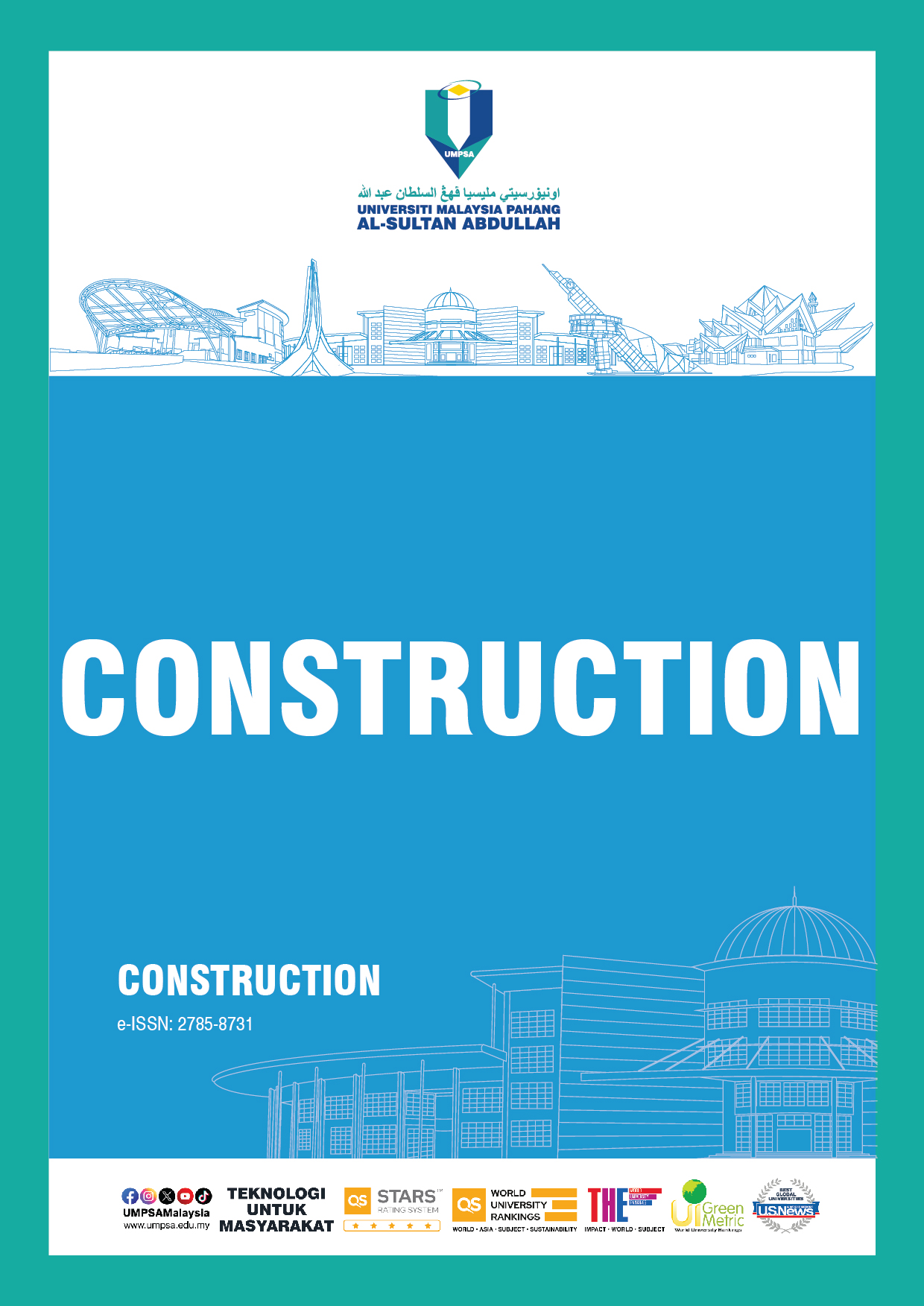Influence of Anodizing Parameters on the Morphological Characteristics of TNTAs
DOI:
https://doi.org/10.15282/construction.v3i2.9773Keywords:
TNTAs, Anodization, Parameters, Morphology, SynthesisAbstract
TiO2 nanotubes arrays (TNTAs) were synthesized using the anodization method in ethylene glycol (EG)-based electrolyte with different percentages of ammonium fluoride (0.3, 0.4, and 0.5 wt.%) and water content (2.5, 5, and 7.5% vol%). All the samples were ultrasonically cleaned in acetone, ethanol, and deionized water, then dried in air and kept in an etching solution for a while before anodization. The two-step anodization was carried out, followed by thermal treatment at 450°C for the crystallization. The nanotube samples were characterized using FE-SEM analysis. The FE-SEM results showed that the largest tube diameter was 87.74±1.89 nm of the TNTAs prepared in the EG electrolyte with a composition of 7.5% water content and 0.5% ammonium fluoride. The longest tube length analyzed was around 5.3 µm of the TNTAs prepared in the ethylene glycol electrolyte with the composition of 2.5% water content and 0.4% ammonium fluoride percentage, exhibiting a highly ordered, compact honeycomb structure and thick single-walled structure.
Downloads
Downloads
Published
Issue
Section
License
Copyright (c) 2023 The Author(s)

This work is licensed under a Creative Commons Attribution-NonCommercial 4.0 International License.




